
|
|
SUBSIM: The Web's #1 resource for all submarine & naval simulations since 1997
 |
SUBSIM: The Web's #1 resource for all submarine & naval simulations since 1997 |
|
|
 10-16-21, 11:08 AM
10-16-21, 11:08 AM
|
#1 | ||
|
Grey Wolf
 |
Quote:
 Quote:
https://www.history.navy.mil/content...1772365144.jpg (from here : https://www.history.navy.mil/researc...ip-shapes.html) Last edited by Mister_M; 10-16-21 at 11:19 AM. |
||

|

|
 10-16-21, 12:31 PM
10-16-21, 12:31 PM
|
#2 | |
|
Navy Seal
 Join Date: Jan 2011
Location: CJ8937
Posts: 8,214
Downloads: 793
Uploads: 10
|
It is my impression that dazzle camoufflages were only used on naval and auxiliary vessels, or at least I have never seen a merchant ship in complex camo scheme. To me, only the ship on the right has a dazzle pattern painted on her hull and I suspect her to be an auxiliary, but again my eyes are not very sharp
Quote:
|
|

|

|
 10-16-21, 12:37 PM
10-16-21, 12:37 PM
|
#3 | |
|
Grey Wolf
 Join Date: Oct 2010
Location: Poland
Posts: 874
Downloads: 72
Uploads: 3
|
Quote:
Edit: ninja'd Some other findings: - German supply ship Roda sinking after being torpedoed in 1940. Interesting example of keeping black/white painting and funnel colours even after being taken into navy service: https://shipwrecks.com/wp-content/up...da_sinking.jpg As for rules for peace-painted ships and coal burners in convoys, there were obviously exceptions, as shown by photo here (atlantic convoy in 1941, phot taken by Robert Capa): 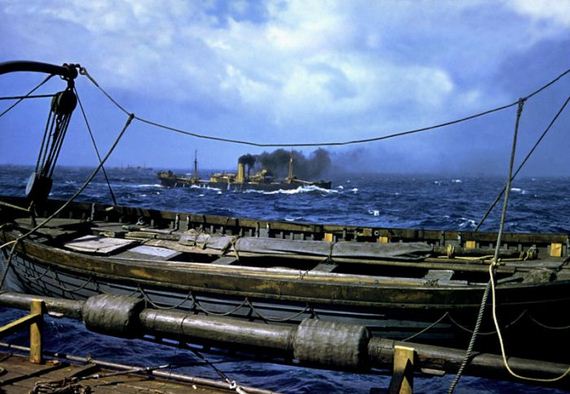
__________________
An elemental spirit summoned up from the Sea of Lament itself and given one purpose, one skill, one desire... to sail! Or, to model hulls and adjust damage zones if no sailing jobs are open. My mods: Little Ships, Air Force Last edited by kapuhy; 10-16-21 at 01:27 PM. |
|

|

|
 10-16-21, 04:17 PM
10-16-21, 04:17 PM
|
#4 | |||
|
Grey Wolf
 |
Quote:
 Quote:
Quote:
Maybe coal burners were not repainted grey because it was totally useless to try to camouflage a ship which produces so much black smoke !... 
Last edited by Mister_M; 10-16-21 at 04:29 PM. |
|||

|

|
 10-16-21, 06:47 PM
10-16-21, 06:47 PM
|
#5 | ||||
|
Navy Seal
 Join Date: Jan 2011
Location: CJ8937
Posts: 8,214
Downloads: 793
Uploads: 10
|
Not exactly my own opinion:
Quote:
Quote:
One photo cannot say anything about the whole story. Quote:
Quote:
As noted by kapuhy, brightly painted ships and old coal-burning tramps sailing within convoys might have been not too an uncommon exception to the above rules, but I would expect them to become rarer and rarer as the war progresses. By the way of that amazing picture by Robert Capa I think I have found the full set of photographs: https://www.lasegundaguerra.com/viewtopic.php?t=13661 https://izismile.com/2017/06/01/a_tr...1_32_pics.html Capa documented at least two Atlantic convoys. Apparently this set is from his first crossing, which took place in December 1941. Please note this other freighter with dark hull, bluff superstructure and white/blue funnel from the same convoy... 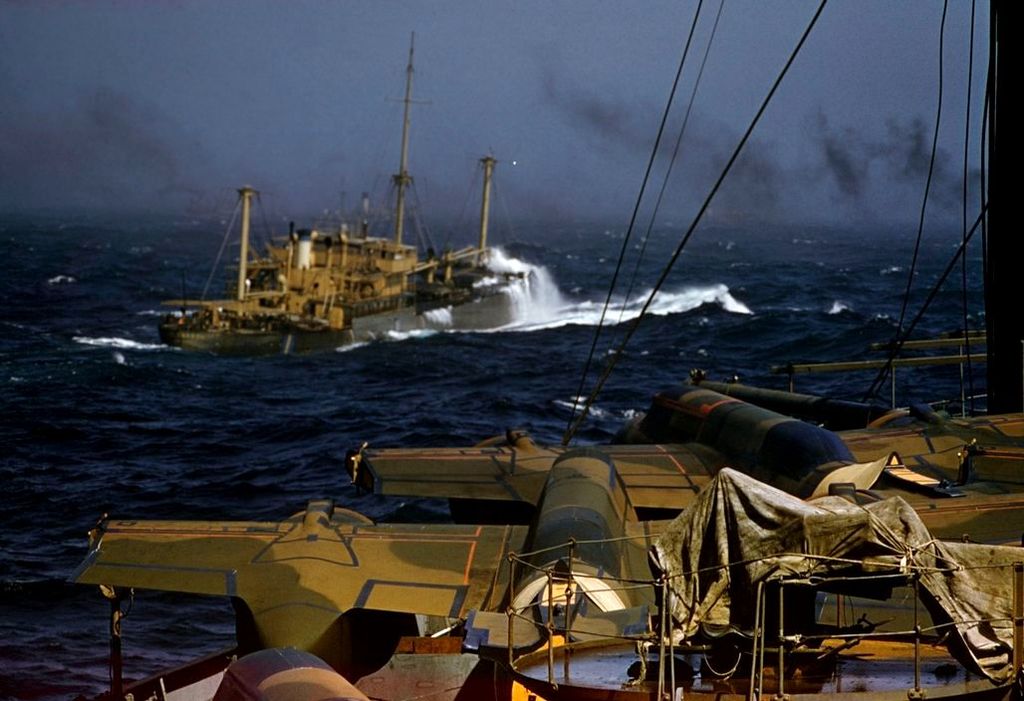 ...and the bad paintwork on these tankers 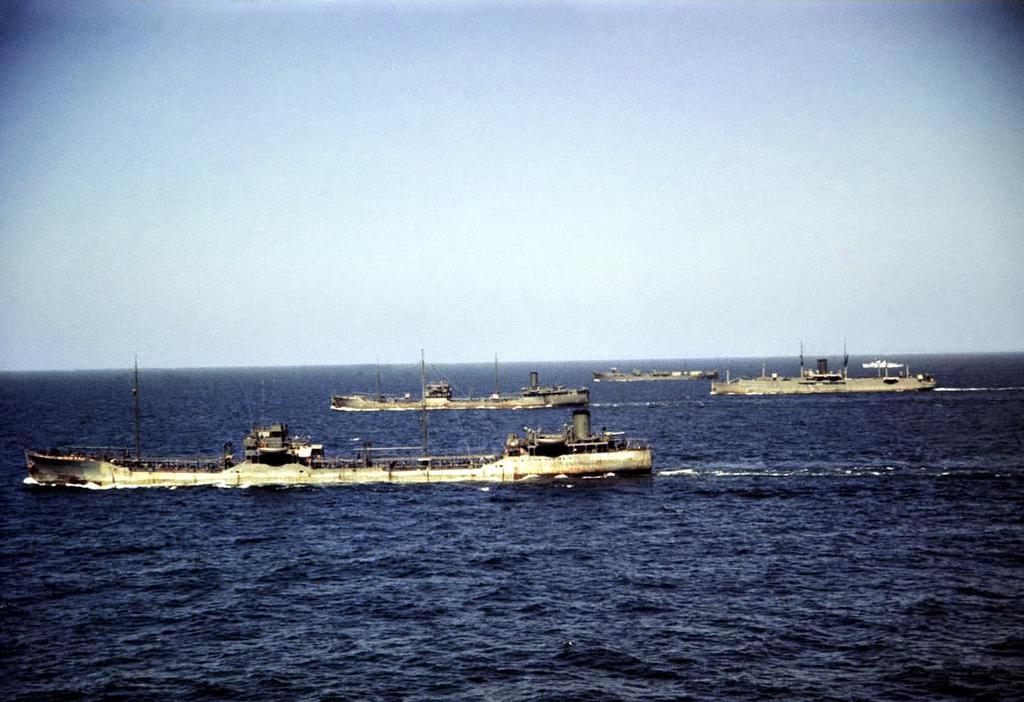 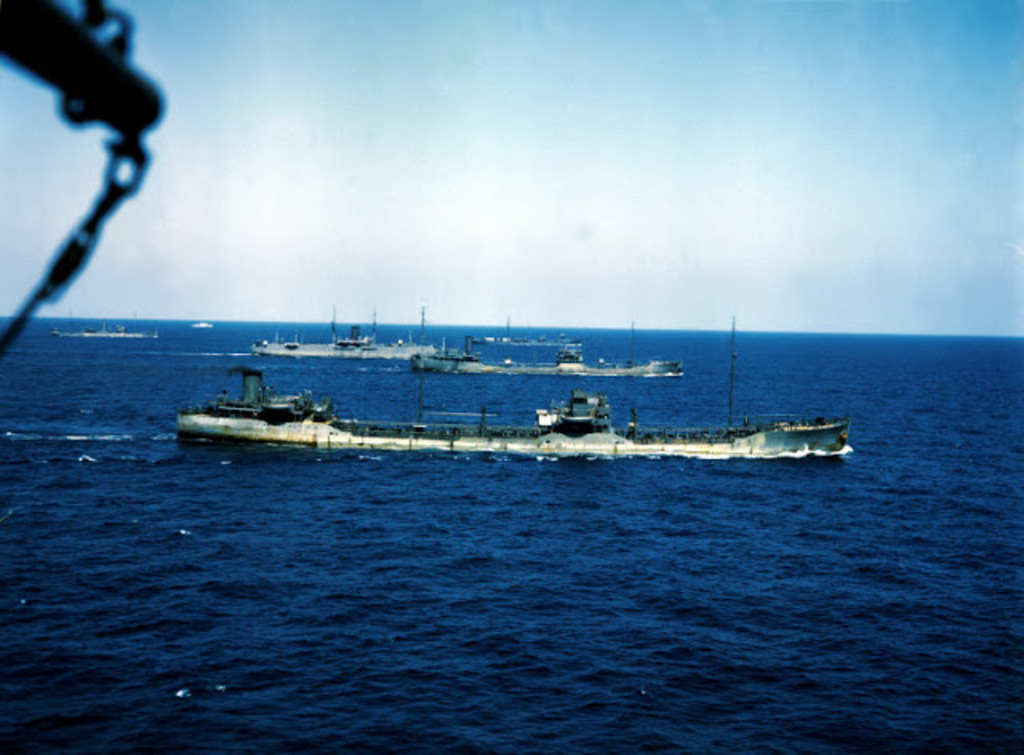 @ kapuhy good finding! 
|
||||

|

|
 10-24-21, 01:18 AM
10-24-21, 01:18 AM
|
#6 | ||||
|
Gefallen Engel U-666
|
Quote:
 Quote:
 <TRANSPORT AP 21 Class <TRANSPORT AP 21 ClassMeasure 16 - Thayer System PLATE XI  < PLATE XII - Cargo Ship AK 25 Class - Thayer System 24 < PLATE XII - Cargo Ship AK 25 Class - Thayer System 24Quote:
Quote:
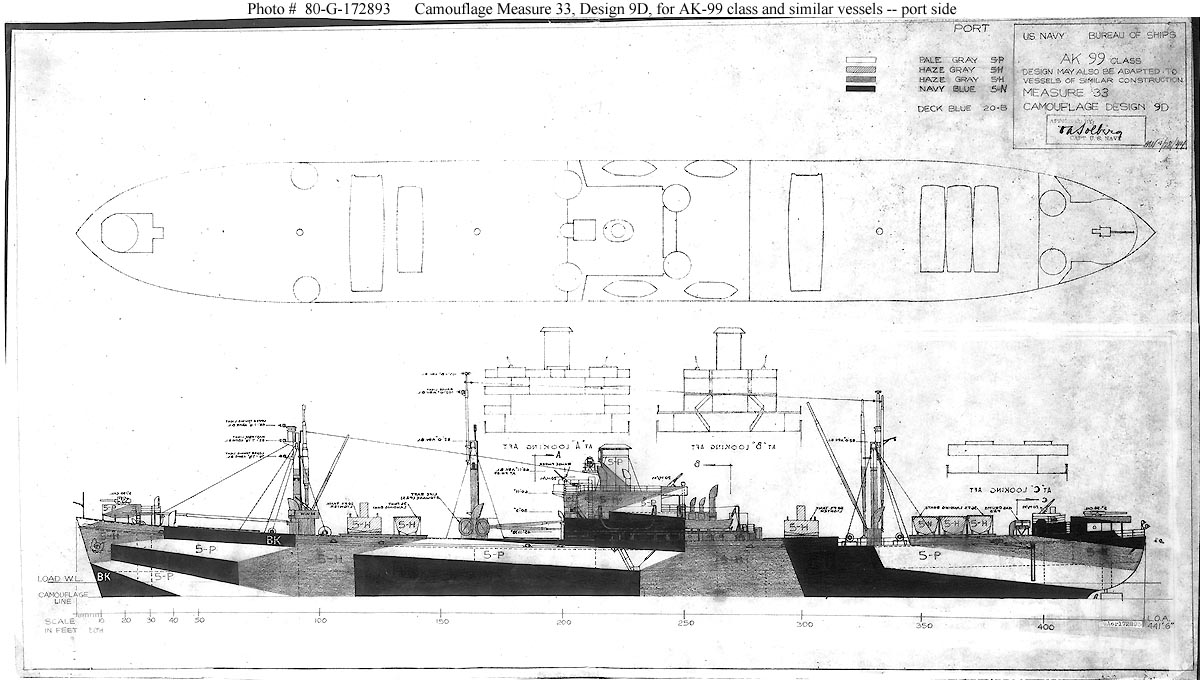 <klik to enlargeOf course all the camo in the world didn't help the Jeremiah O'Brien recently... <klik to enlargeOf course all the camo in the world didn't help the Jeremiah O'Brien recently...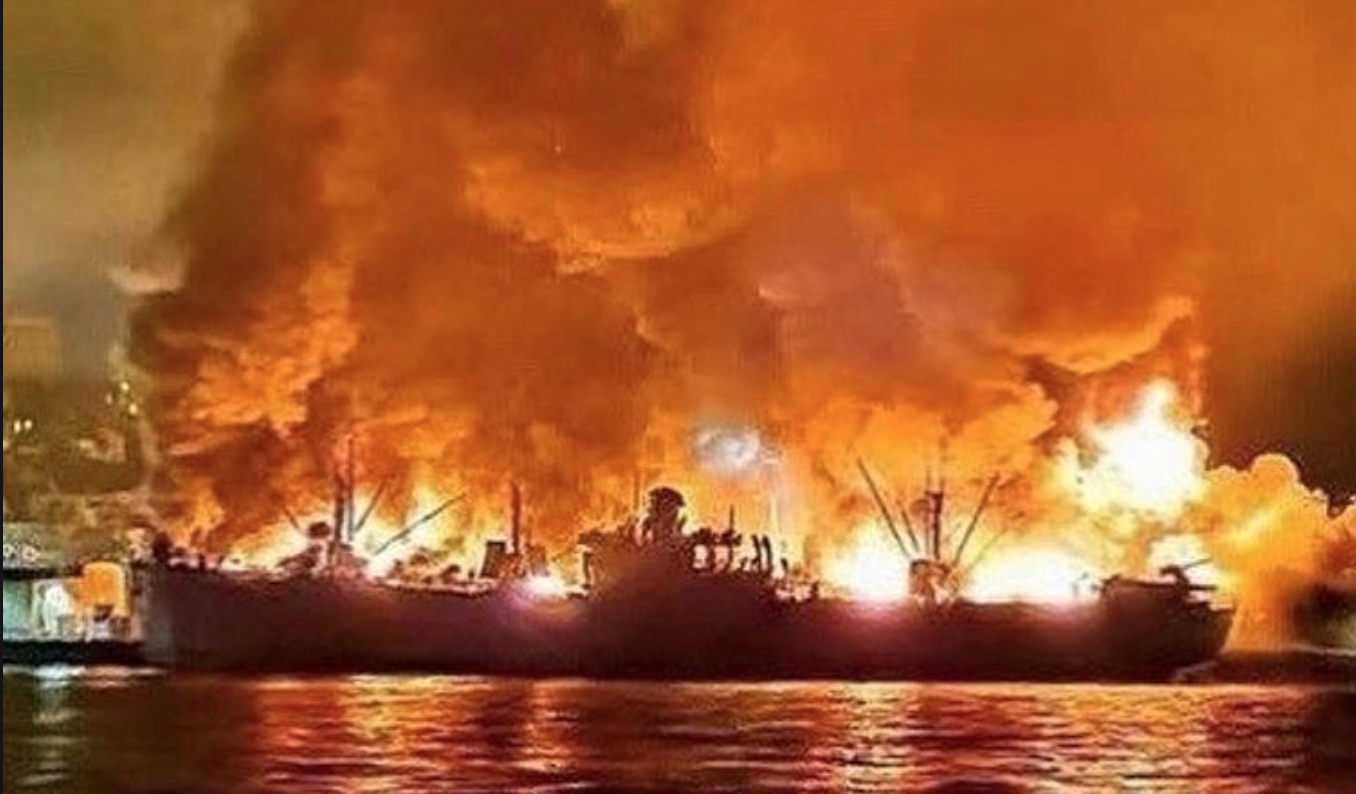  ATTN modders: The recent photo in the SF Chronicle is a a 'no bullshot of an actual burning Liberty ship. if ever! I cannot believe some adept modder can't adapt this to SH-V at least; to effect 'total immersion' realistic graphics of a burning WWII cargo ship!!?? ATTN modders: The recent photo in the SF Chronicle is a a 'no bullshot of an actual burning Liberty ship. if ever! I cannot believe some adept modder can't adapt this to SH-V at least; to effect 'total immersion' realistic graphics of a burning WWII cargo ship!!?? Then of course there's the USS Allegan AK-225 in a less than dazzling camo worth noting!!?? Her camouflage is Measure 32 Design 1F. Then of course there's the USS Allegan AK-225 in a less than dazzling camo worth noting!!?? Her camouflage is Measure 32 Design 1F. 
__________________
"Only two things are infinite; The Universe and human squirrelyness; and I'm not too sure about the Universe" Last edited by Aktungbby; 10-24-21 at 12:18 PM. |
||||

|

|
 10-24-21, 09:18 AM
10-24-21, 09:18 AM
|
#7 |
|
Seasoned Skipper
 Join Date: Nov 2019
Location: Russian Federation Nizhny Novgorod
Posts: 713
Downloads: 2338
Uploads: 0
|
Absolutely brilliant!

__________________

|

|

|
 10-24-21, 10:28 AM
10-24-21, 10:28 AM
|
#8 |
|
Gefallen Engel U-666
|
Not really; but thanks!
 the subject came up in Atoka220's thread: https://www.subsim.com/radioroom/sho...44&postcount=1 And I responded accordingly as I'm often aboard the USS Jeremiah O'Brian parked next to the Gato class USS Pampanito in SF's Fisherman's Wharf. The photos of the warehouse fire that scorched the Normandy survivor are terribly authentic; no imho 'bout it. Seeing such in real time should be a modders dream as to authenticity!! https://www.subsim.com/radioroom/sho...78&postcount=8 the subject came up in Atoka220's thread: https://www.subsim.com/radioroom/sho...44&postcount=1 And I responded accordingly as I'm often aboard the USS Jeremiah O'Brian parked next to the Gato class USS Pampanito in SF's Fisherman's Wharf. The photos of the warehouse fire that scorched the Normandy survivor are terribly authentic; no imho 'bout it. Seeing such in real time should be a modders dream as to authenticity!! https://www.subsim.com/radioroom/sho...78&postcount=8
__________________
"Only two things are infinite; The Universe and human squirrelyness; and I'm not too sure about the Universe" |

|

|
 10-24-21, 02:51 PM
10-24-21, 02:51 PM
|
#9 | |
|
Grey Wolf
 |
Quote:
  At least, it's my opinion... Perhaps moonlight is not enough to spot light grey ships' hull from far distances... but this would be surprising to me. At least, it's my opinion... Perhaps moonlight is not enough to spot light grey ships' hull from far distances... but this would be surprising to me.Else, interesting discussion here : http://cs.finescale.com/fsm/modeling...7/t/33023.aspx Last edited by Mister_M; 10-24-21 at 03:05 PM. |
|

|

|
 10-24-21, 03:29 PM
10-24-21, 03:29 PM
|
#10 | |||||||||||
|
Navy Seal
 Join Date: Jan 2011
Location: CJ8937
Posts: 8,214
Downloads: 793
Uploads: 10
|
Recently I have been digging on the internet for information on the ensigns worn by various types of British and Commonwealth vessels, and I thought I would share my findings here in case someone is interested.
Summary of the flags mentioned in this post and their usage:  Merchant vessels / Some troop transports (?) / Some Landing Ships / CAM/MAC ships Merchant vessels / Some troop transports (?) / Some Landing Ships / CAM/MAC shipsBritish Red Ensign *  As above As aboveAustralian Red Ensign  As above As aboveCanadian Red Ensign  As above As aboveNew Zealand Red Ensign  As above As aboveSouth African Red Ensign **  Royal Mail Ships (?) Royal Mail Ships (?)Royal Mail Ensign  Royal Fleet Auxiliary vessels / Q-ships / Hospital Ships (?) Royal Fleet Auxiliary vessels / Q-ships / Hospital Ships (?)Admiralty, Government Service or Transport Ensign  Troop Transports (?) / Hospital Ships (?) Troop Transports (?) / Hospital Ships (?)Board of Trade Ensign  Vessels commissioned in one of the Commonwealth navies (ilcuding some landing ships), except Q-ships Vessels commissioned in one of the Commonwealth navies (ilcuding some landing ships), except Q-shipsWhite Ensign _______________________ Notes * The Red Ensign (undefaced) was also the civil ensign flown aboard merchant vessels registered in British India. While the Raj had its own version of the Red Ensign defaced with the so called "star of India", this flag had only a limited use: Quote:
Quote:
** Since 1928 South Africa had its own national flag, nonetheless... Quote:
Quote:
Quote:
Quote:
_______________________ That should be all for now guys. In case you find any wrong information, if you think I have missed some notable flag or vessel type, or if you can provide new information relevant to the subject of this post, I will gladly update it with your imputs 
Last edited by gap; 10-24-21 at 05:42 PM. |
|||||||||||

|

|
 10-24-21, 06:33 PM
10-24-21, 06:33 PM
|
#11 | |
|
Seasoned Skipper
 Join Date: Nov 2019
Location: Russian Federation Nizhny Novgorod
Posts: 713
Downloads: 2338
Uploads: 0
|
Quote:
By the way, American pilots who joined the British Air Force also fought under the British flag in the Battle of the English Channel. They were seconded to the British forces. This applied not only to airplanes but also to ships.
__________________

|
|

|

|
 10-25-21, 05:50 PM
10-25-21, 05:50 PM
|
#12 | |||
|
Navy Seal
 Join Date: Jan 2011
Location: CJ8937
Posts: 8,214
Downloads: 793
Uploads: 10
|
Quote:
Quote:
  Before I do it, I have created a table which should cover most of the paint colours mentioned in the document (HEX values taken from here):  Talking about the so called "Measure 16-Thayer System", I read that it was specifically designed for weather conditions similar to North Atlantic ones but, as far as I can understand, only troop transports and cargo ships commissioned in the US Navy were painted with it. The following link has a comprehensive list of vessels to which the said pattern might have applied: https://www.ibiblio.org/hyperwar/USN/USN-ships.html What I wonder is: which was the exact employment of those vessels by USN? Would they sail within mixed convoys? http://www.convoyweb.org.uk/ might have some answers Quote:
 Thank you mate, my own pleasure I had already read that during Normandy landings (or maybe it was for Operation Torch, I don't remeber now), US aircraft had adopted British markings, I wasn't aware of the British ensign being flown on US ships though. Do you have any link which might add some detail? |
|||

|

|
 |
|
|
